Mokwheel has steadily carved out its place in the direct-to-consumer e-bike market, and with each successive model, the brand demonstrates a clear commitment to addressing rider feedback and refining its designs. The latest example of this evolution is the Mokwheel Tarmac, a $1,899 commuter e-bike that takes some genuinely bold steps away from conventional wisdom.
Right off the bat, you’ll notice the 29-inch wheels—a big jump from the 27.5-inch standard that dominates the category. Just as notable is Mokwheel’s decision to ditch the coil spring fork for an air suspension system, eliminating the harsh top-end performance and poor impact absorption that plague most coil spring forks. The air fork’s adjustability based on rider weight means proper performance tuning rather than the one-size-fits-all compromise of coil springs.
But bigger wheels and better suspension are just the beginning. The Tarmac arrives loaded with practical tech like dual cadence and torque sensors, comprehensive front-to-back lighting with brake highlights and turn signals, plus a proprietary frame-integrated headlight. A detachable faceplate adds security while improving visibility across lighting conditions. Factor in the included fenders and rack, and the Tarmac positions itself as a fully-equipped commuter straight out of the box.
The question is whether all these features translate into real-world performance that justifies the package. Let’s find out.
My Experience Riding The Mokwheel Tarmac E-Bike
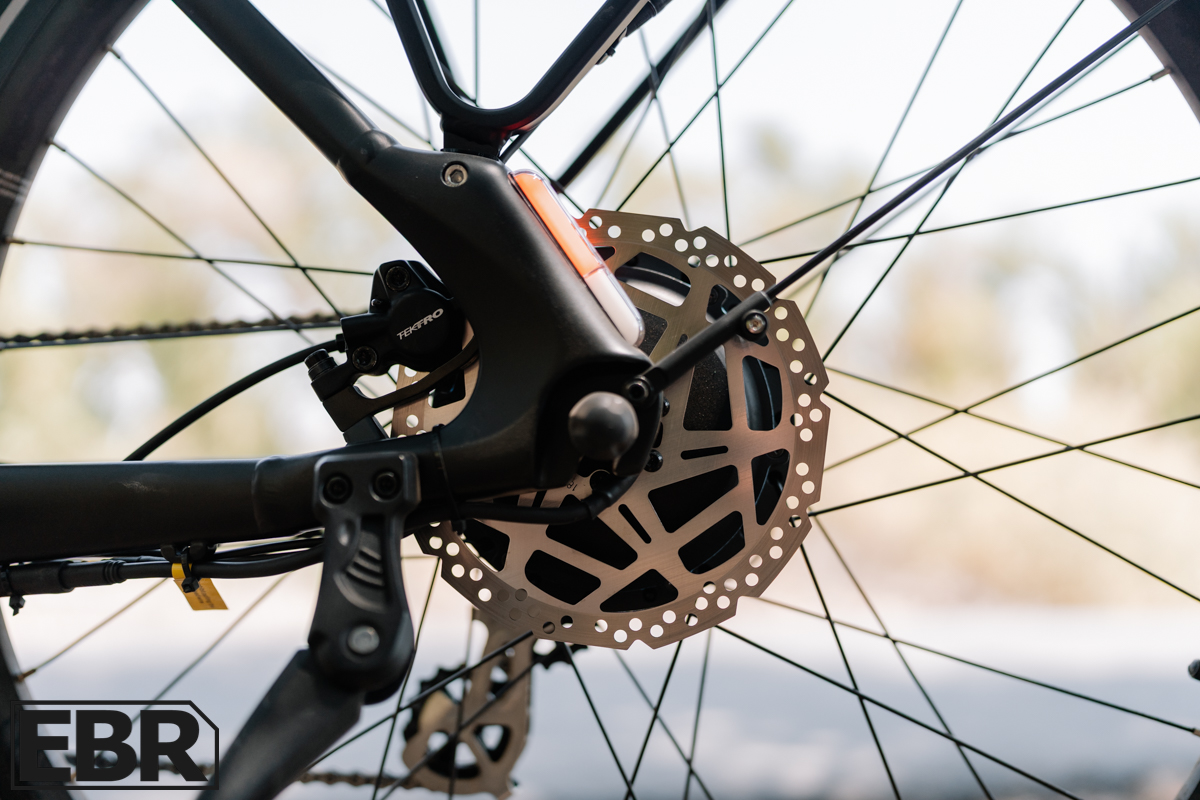
I was sent a large in Phantom Black, a blacked-out colorway with a matte finish that I’m always a fan of. At 5’11”, I found the fit to be spot-on, but with a 32″ standover height, shorter riders should consider the standard size if flat-foot ground contact matters to you. The reach is listed at 17″, but the 90-degree adjustable stem gives you plenty of room to dial in your preferred position—from slammed forward to bolt upright.
Combined with contact points like the genuinely plush comfort saddle and ergonomic gel-padded grips, the Tarmac feels like a bike you could ride for hours without paying for it later.
The front 80mm air fork provides a soft landing when dealing with curbs, speed bumps, or those potholes the city swears they’re going to fix “soon.”
The bike feels solid while riding—no mystery rattles or cheap sensations. It genuinely punches above its weight class in perceived quality. The 29×2.35 Cooper Preston tires feature a city commuter tread that rolls quietly and smoothly, while the hydraulic disc brakes provide confident stopping power. Anytime a commuter comes with full front-to-back LED lighting, including taillights with brake functionality and turn signals, I’m impressed. Between that lighting package and the rear rack, the Tarmac is genuinely built to commute.
The 750W rear hub motor does have some audible motor noise—typical of most e-bike motors above 500W—but it’s hardly intrusive. I really only noticed it when punching the throttle or trying to max out the speed. During casual riding, it faded into the background.
The real standout feature is the motor’s customization options. I could set speed limits for each PAS level, limit the throttle to a lower speed or let it rip up to 28 mph (check your local laws), and adjust the power and sensitivity of the pedal assist for anything from punchy acceleration to a more relaxed ride. I ended up sticking with the factory defaults, which struck the best balance of speed and safety.
Stepping back and looking at the complete package, the Mokwheel Tarmac checks all the boxes for a commuter with attitude. The air fork, comprehensive lighting, highly customizable motor, and big 29er wheelset position it well to compete with major commuter releases from more established brands. Given Mokwheel’s consistent improvements with each release, that competition seems well-deserved. While I wait for the city to fix that pesky pothole, I’ll let the Tarmac do the heavy lifting on my commute, it seems to handle it well.
Range
Estimated Range (from Mokwheel):
- Up to 60 miles
Real World Range Test Results:
- MIN Test: 74 miles
- MAX Test: 38 miles
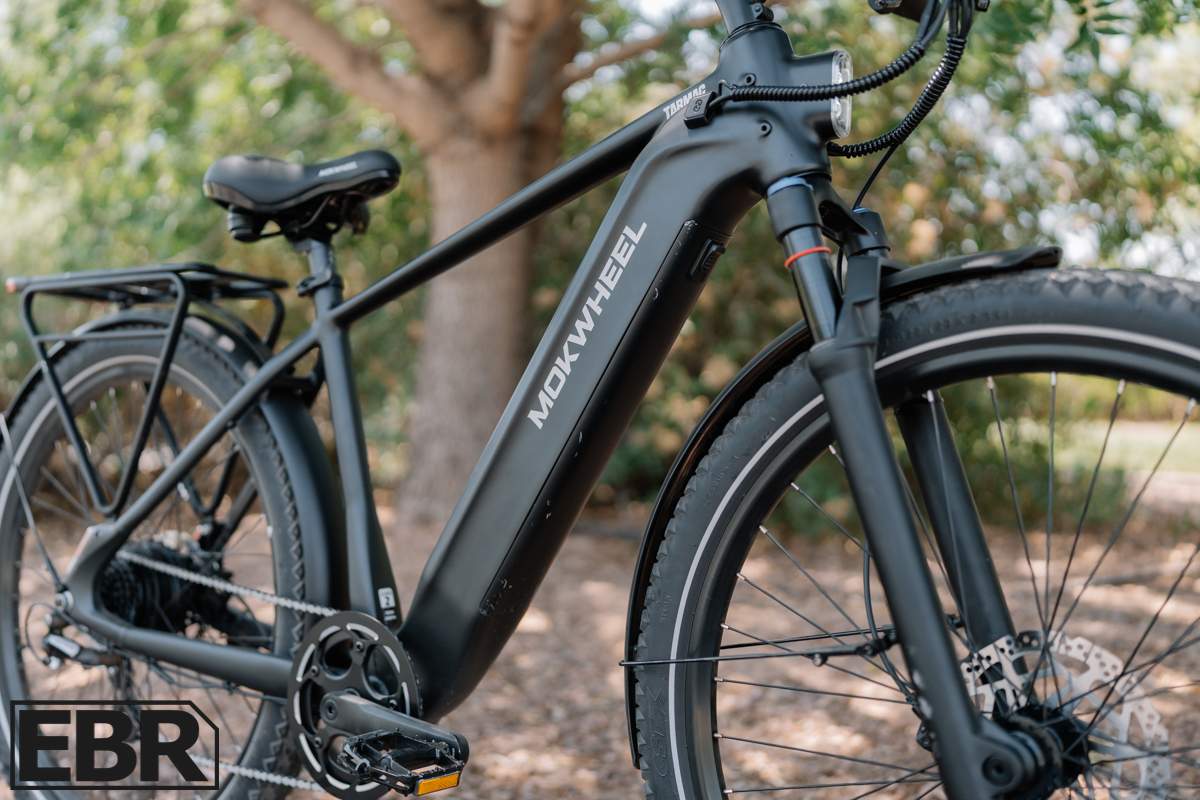
Mokwheel advertises 50-60 miles on a single charge, so I put that claim to the test with two deliberate range runs. First up: maximum pedal assist at full speed netted me 38 miles before the battery called it quits. After a full recharge, I flipped the script and rode on minimum assistance, managing an impressive 73 miles—substantially more than advertised.
Why such a huge swing? I have my suspicions, and it comes down to that torque sensor with dynamic power delivery. Push slower and softer on the pedals, and you get less motor assistance. Pedal faster with more pressure, and the motor delivers more power accordingly. So when I’m cruising slow in the lowest PAS setting, I’m barely taxing the battery—which explains why I easily surpassed the upper range estimate. Conversely, when I’m hammering it at max assistance and speed, the motor is working overtime, explaining why I fell well short of even the conservative 50-mile estimate.
Most riders don’t stick to one extreme or the other. You’ll use a mix of PAS levels throughout your ride—higher assistance for hills or headwinds, lower settings on flats or with tailwinds. With typical mixed riding (but not purely minimum assistance), owners can reasonably expect 45-65 miles from a single charge.
Of course, your mileage will vary based on the usual suspects: rider weight, wind conditions, stop-and-go frequency, terrain, and how aggressively you ride. But the Tarmac’s intelligent torque sensing means efficient riders will be rewarded with impressive range numbers.
Power (Motor & Battery)
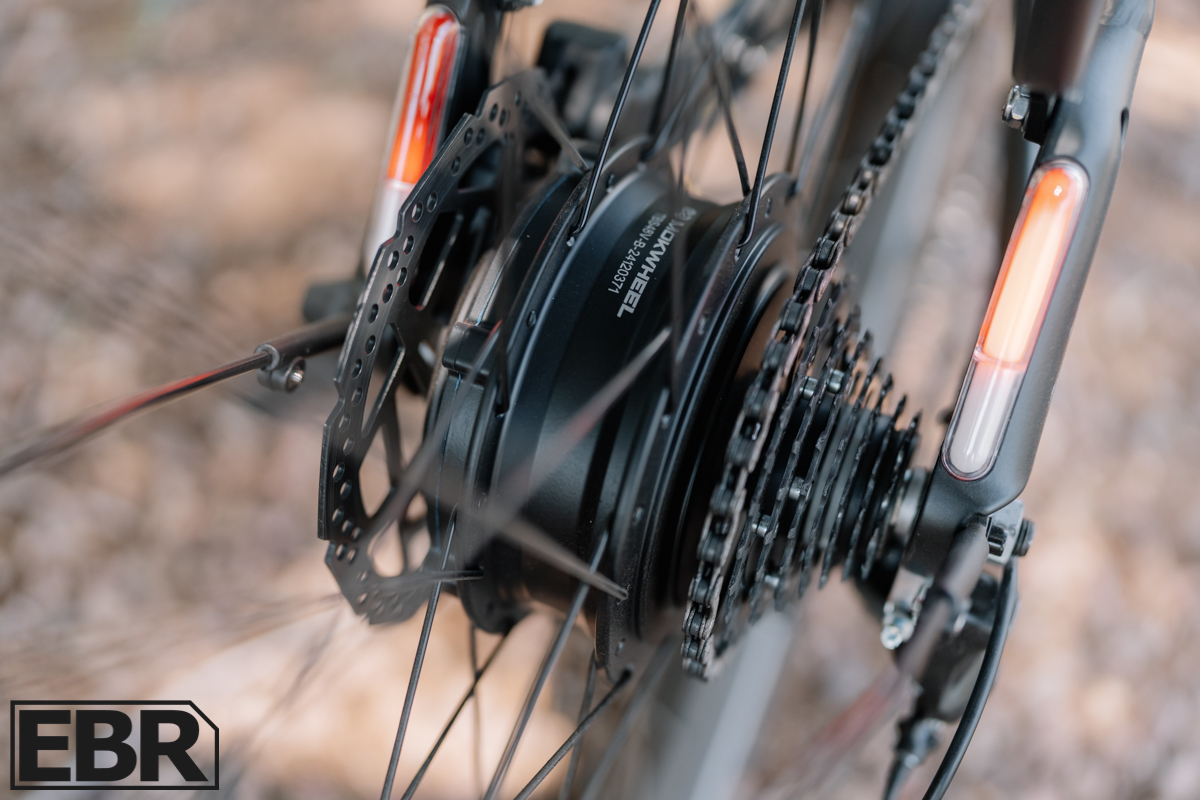
The Tarmac’s rear hub motor delivers 750W continuous power, peaking at 920W with 75Nm of torque. It’s not a speed demon or hill crusher, but it handles both duties competently. The dual cadence and torque sensors provide a natural feel, and the extensive customization options make the bike feel truly personalized when you hop on. While it’s capable of Class 3 speeds on both pedal assist and throttle, you can dial back each system to whatever limit suits your needs through the color TFT display.
Power comes from a 48V 15Ah battery pack delivering 720Wh of capacity with UL 2271 certification. The battery is fully integrated into the frame and secured with a lock and key, allowing for off-bike charging or easy removal for security and storage—options many riders appreciate depending on where they live. The setup estimates up to 60 miles of range and provides solid power and capacity for most riders’ typical commute week.
Components
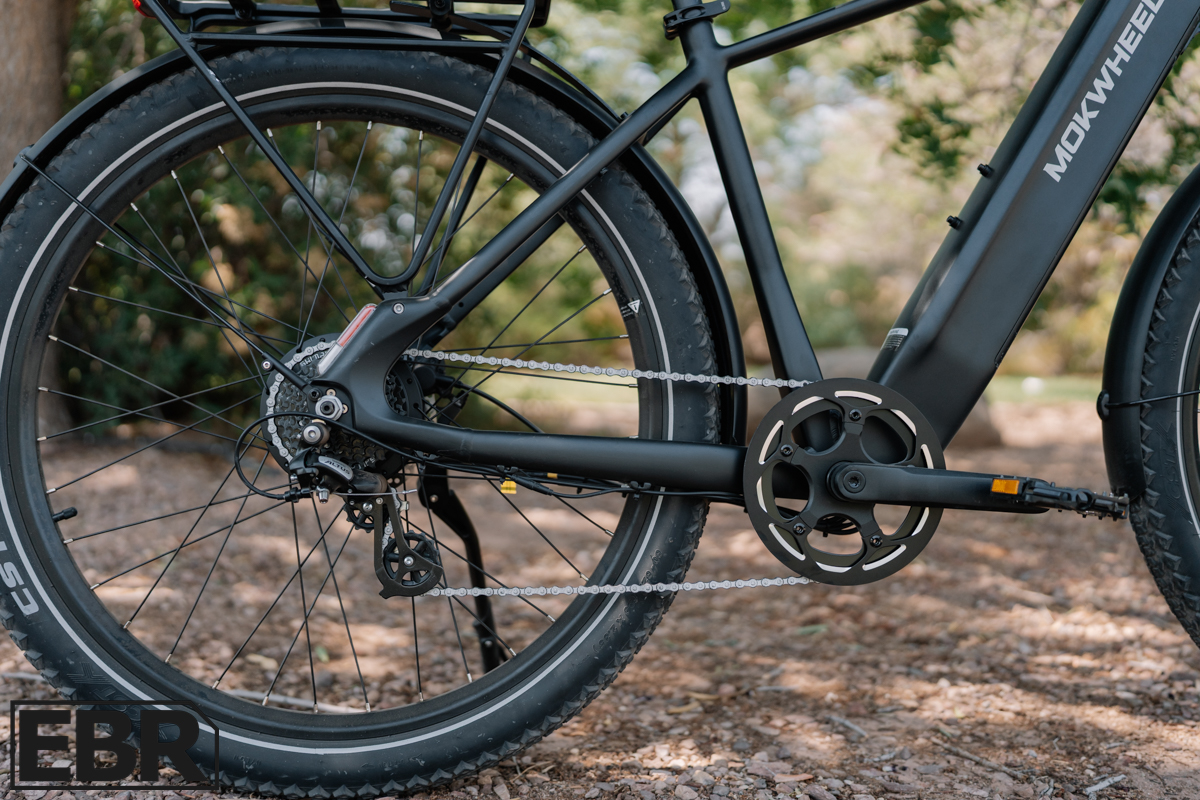
The Tarmac’s component selection hits the sweet spot for its price point, though Mokwheel clearly knew where to spend the money. The drivetrain is no-nonsense reliable: 8-speed Shimano Altus rear derailleur with Shimano trigger shifters and a 46T chainring. It’s not going to wow anyone, but it shifts cleanly and does exactly what a commuter drivetrain should do—work without drama.
Up front, you get a 680mm alloy handlebar with Mokwheel’s ergonomic gel-padded grips that actually live up to their name. The 90-degree adjustable stem is a smart touch that saves riders from expensive stem swaps down the line. The unbranded comfort saddle won’t win any style points, but it’s genuinely comfortable for longer rides.
Braking comes courtesy of Tektro hydraulic disc brakes with 2-piston calipers and 180mm rotors. They’re not the flashiest stoppers out there, but they bite consistently and have enough power for Class 3 speeds—which is really all that matters. The flat alloy pedals are basic but functional and get the job done.
Here’s where things get interesting: those 29-inch wheels and 80mm air fork with rebound adjustment are components you’d typically find on bikes costing significantly more. The larger wheels roll over obstacles more easily and maintain momentum better than smaller setups, while the adjustable air fork is a genuine upgrade over the coil springs plaguing most budget builds. Smart choices throughout—spend where it counts, save where it doesn’t.
Screen / User Interface / App
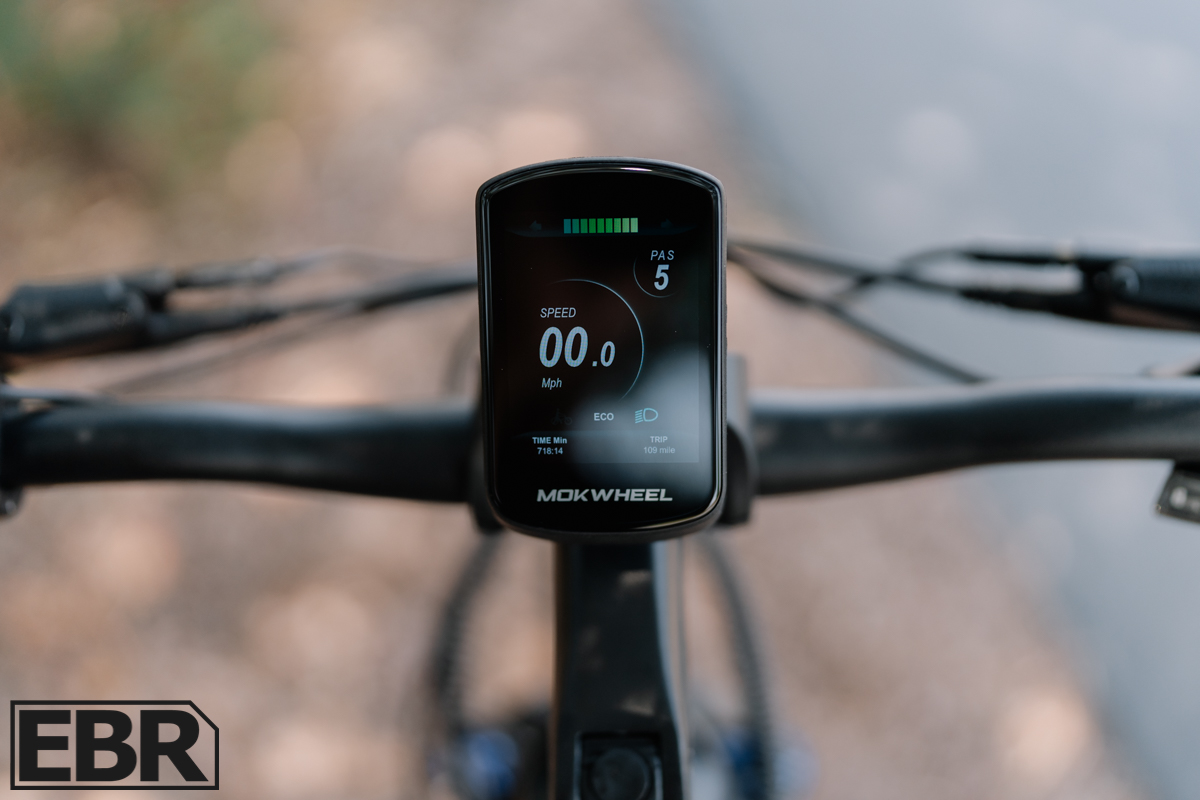
Mokwheel doesn’t offer a companion app for any of their bikes, which actually works in Tarmac’s favor—the 2.8″ color TFT display handles all the heavy lifting for settings, customization, and advanced menus without needing to fumble with your phone.
The main screen covers all the basics you’d expect: speed, PAS level, turn signal and headlight indicators, time, odometer, and trip meter. Everything’s laid out clearly on the crisp color display and easy to read at a glance.
The detachable faceplate is a smart security touch—pop it off when you lock up and potential thieves are left staring at a much less appealing target. Getting into the deeper settings is straightforward—hold the plus and minus PAS buttons for about two seconds to enter the technical settings menu covering bike info and display controls. From there, a second performance settings menu lets you tweak motor behavior, PAS levels, and power delivery to your heart’s content.
The best part? These are actual plain-language menus that don’t require a translator to decipher. No cryptic abbreviations or confusing symbols—just clear, understandable options that make customization accessible rather than intimidating. It’s refreshing to see a display that respects riders’ intelligence without making them work for it.
Mokwheel Tarmac Model Options
The Tarmac comes in two frame sizes and three colorways, though the sizing situation is a bit quirky. You’ve got Standard (5’5″ to 6’6″) and Large (5’7″ to 6’7″) options, available in Phantom Black (like my test bike), Stormy Blue, and Pine Green—all sporting attractive matte finishes.
The frame geometry differences are surprisingly minimal between sizes making it an interesting choice by Mokwheel. We’re talking about just an inch here and there across reach, standover, and wheelbase measurements, despite the overlapping rider height recommendations. It’s almost like Mokwheel played it overly safe with their sizing.
Honestly, I’d love to see them offer a substantially smaller frame to accommodate riders under 5’5″—there’s clearly a gap in their sizing range that’s leaving shorter riders out in the cold.
One clarification on the sensor setup: despite my initial assumption, you can’t actually switch between the cadence and torque sensors. The motor’s programming uses both simultaneously for the pedal assist system, which explains that natural, responsive feel.
The Tarmac ships ready to commute with both front and rear plastic fenders plus a rear rack included—no extra charges there. If you want to go all-out, Mokwheel offers plenty of add-ons: spare batteries, front racks, helmets, pet carriers, rack bags, weatherproof covers, car racks, and more.
Bottom line: pick your size, pick your color, and you’re good to go. The decision matrix is refreshingly simple.
Is The Mokwheel Tarmac Worth Buying?
After spending quality time with the Tarmac, it’s clear that Mokwheel has hit their stride with this one. At $1,899, you’re getting a commuter that punches well above its weight class, thanks largely to smart choices about where to spend the money.
The 29-inch wheels and adjustable air fork are genuine upgrades that most brands reserve for pricier models, and they make a real difference in ride quality. The comprehensive lighting package, dual sensor system, and extensive customization options through that clear, detachable display show a brand that’s actually listening to what commuters want and need.
Sure, there are some compromises—the frame sizing could be more inclusive for shorter riders, and the component spec is solidly middle-of-the-road elsewhere. But those choices allow Mokwheel to invest in the features that matter most for daily riding.
The real standout is how refined everything feels. No mystery rattles, intuitive controls, impressive range flexibility, and a ride quality that genuinely surprised me. This feels like a bike from a company that’s learned from past mistakes and isn’t just throwing features at the wall to see what sticks.
For riders wanting a capable, well-equipped commuter that doesn’t feel like a compromise, the Tarmac delivers. It’s not the cheapest option out there, but it’s priced fairly for what you get—and more importantly, it feels like a bike you’d actually want to ride every day.
Pros
- 29-inch wheels are a refreshing change from the more commonly seen 26-inch and 27.5-inch setups that dominate this category.
- The air fork feels miles better than the coil springs we usually see at this price point, providing adjustable performance that actually works.
- The TFT display does all the heavy lifting with clean, easy-to-use menus, features a 2.8-inch detachable faceplate, and offers full color with excellent contrast.
- Commuter perks like fenders, comprehensive lighting package (headlight, taillight, brake light, and turn signals), plus a rear rack come standard.
- Range was impressive enough for any commute I know of, thanks to the dynamic power delivery of the torque sensor system.
Cons
- No sizing option under 5’5″ leaves out a significant group of potential riders, and the two available frame sizes are only separated by 1-2 inches in geometry—it just doesn’t make sense.
- Proprietary headlight design could become a headache down the road for replacement parts or service needs.

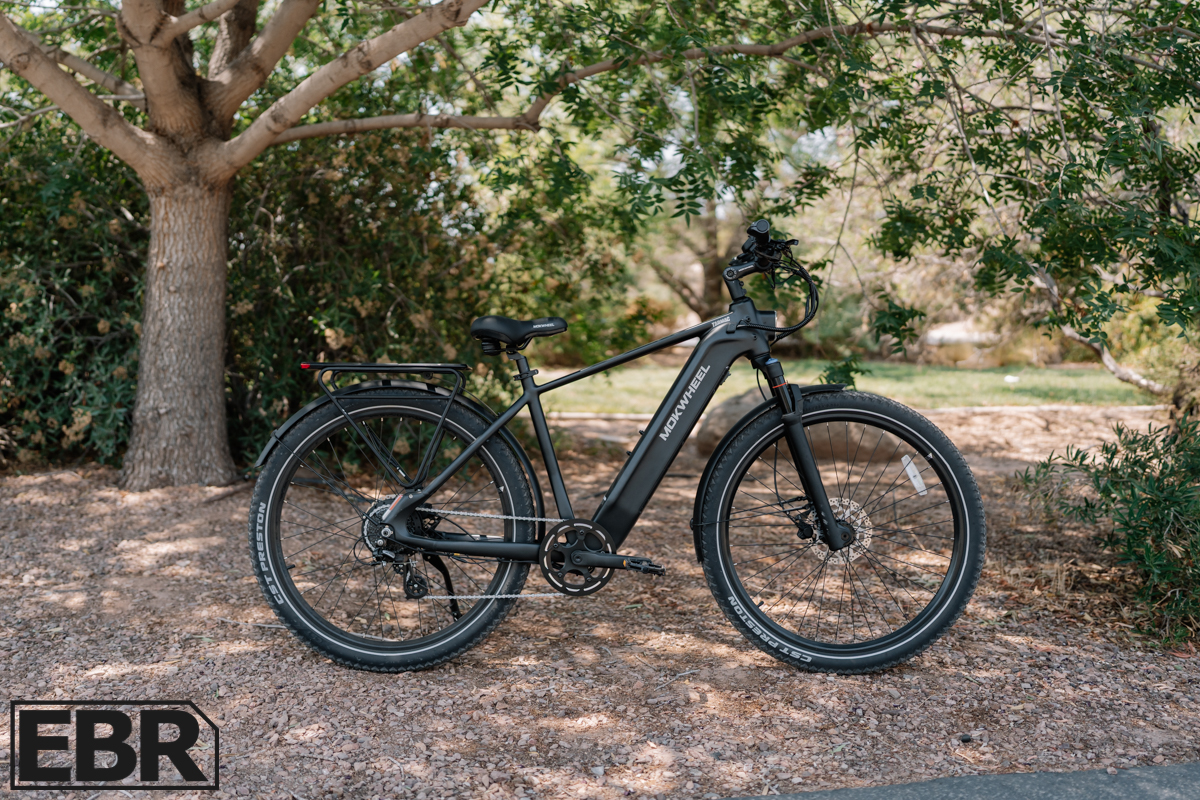

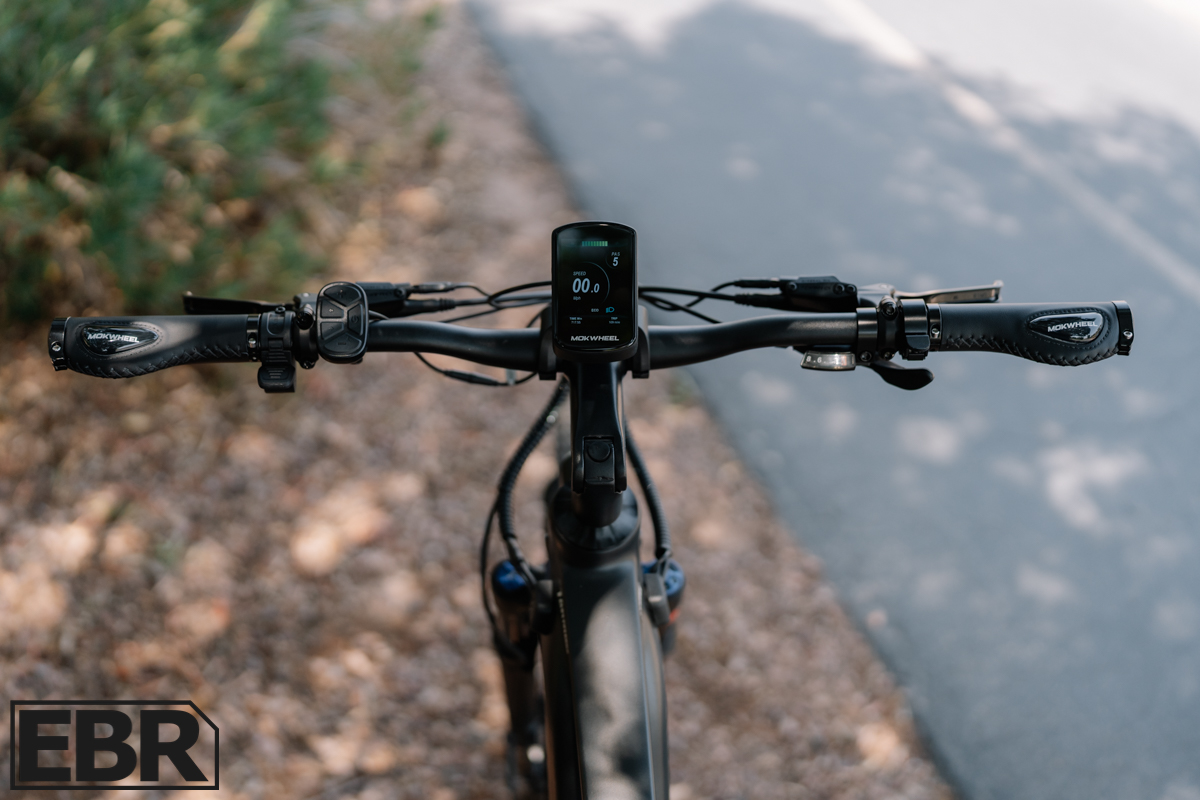

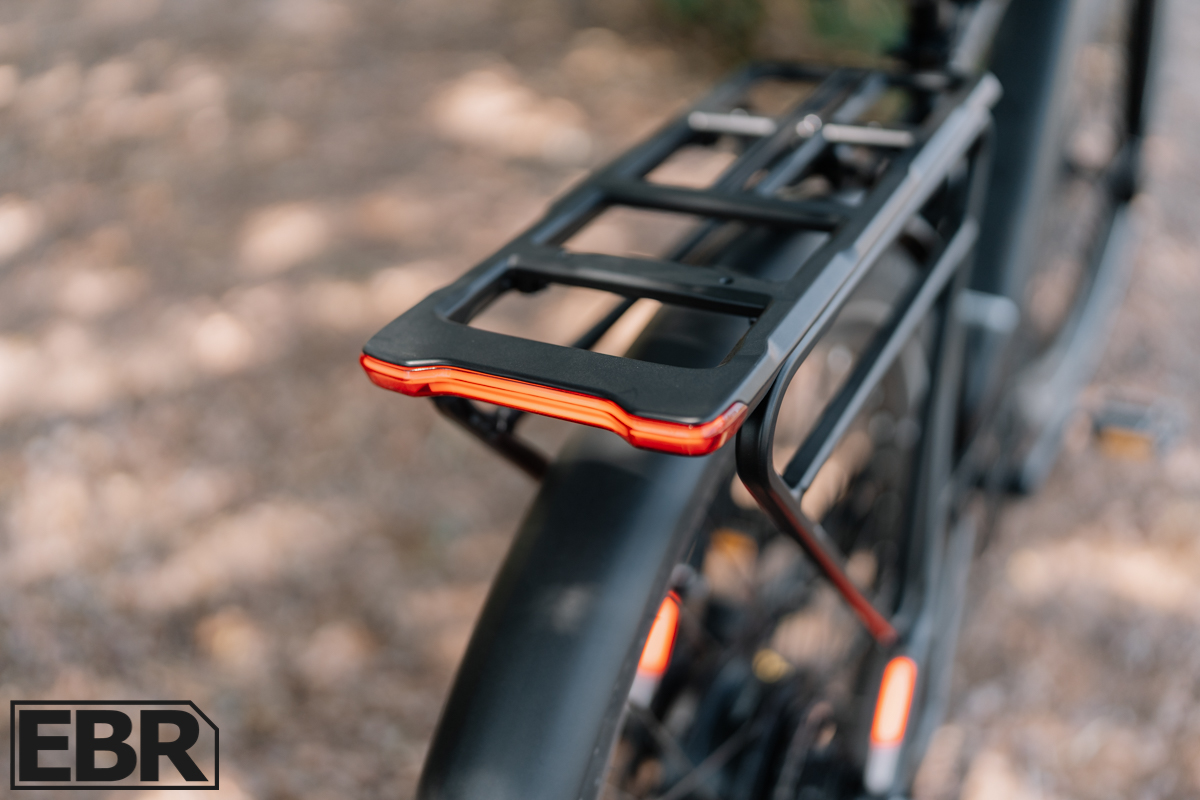



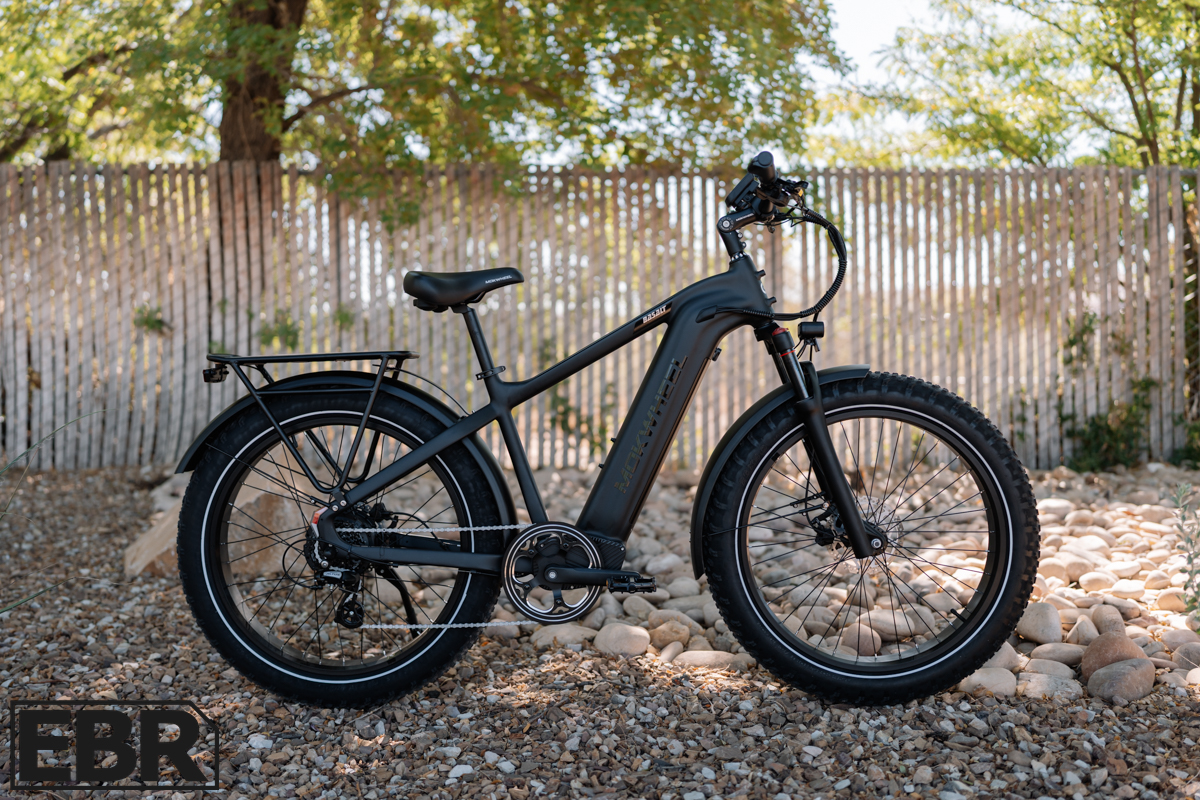
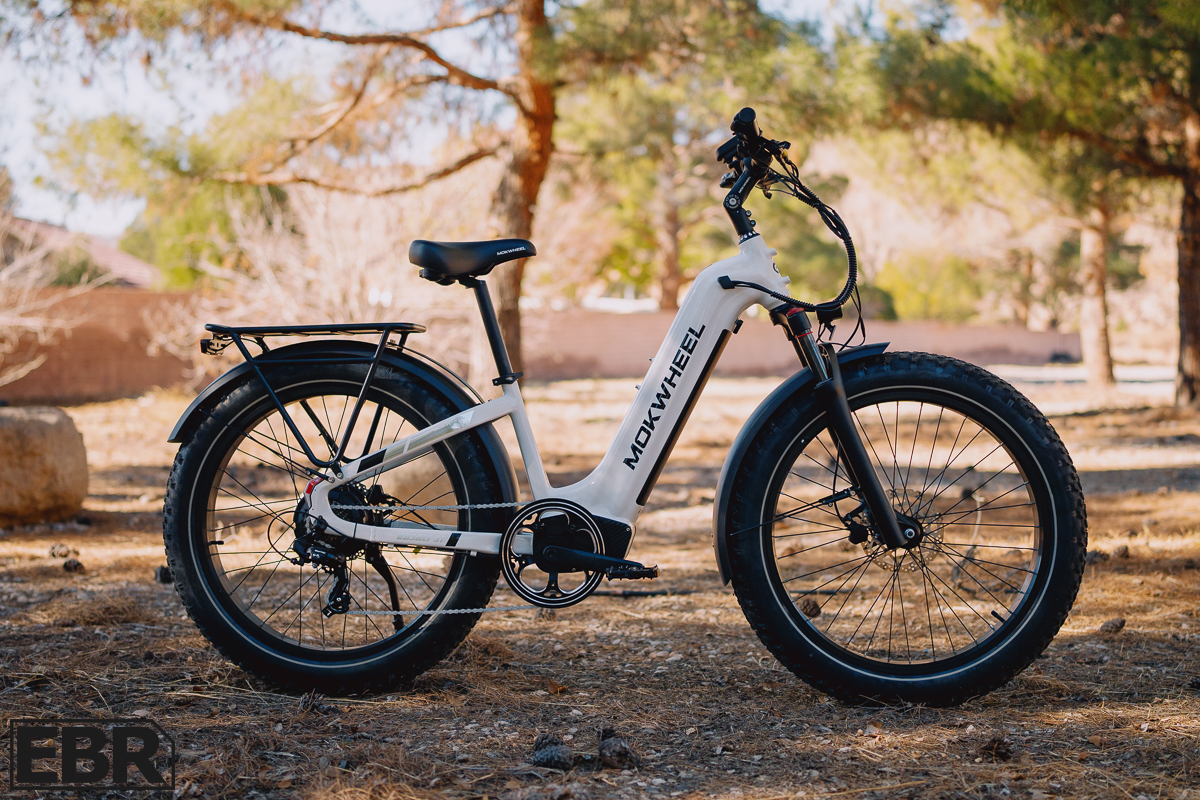

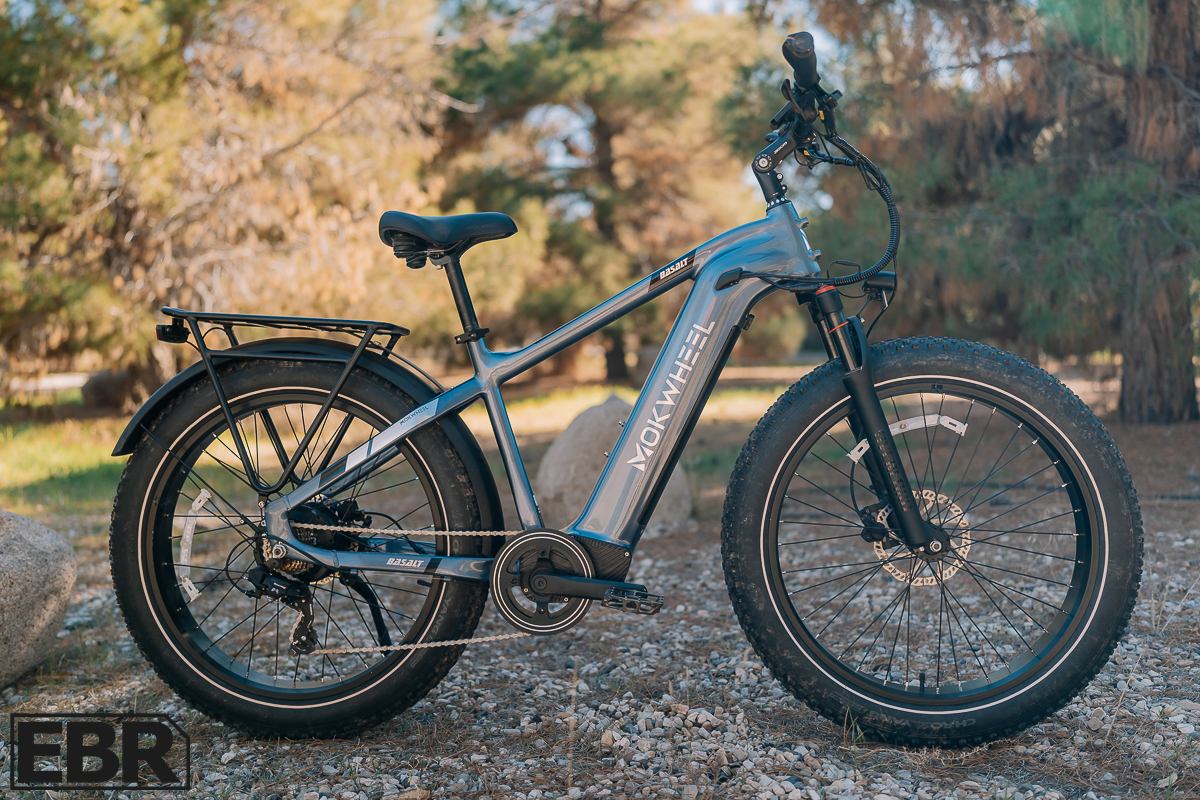
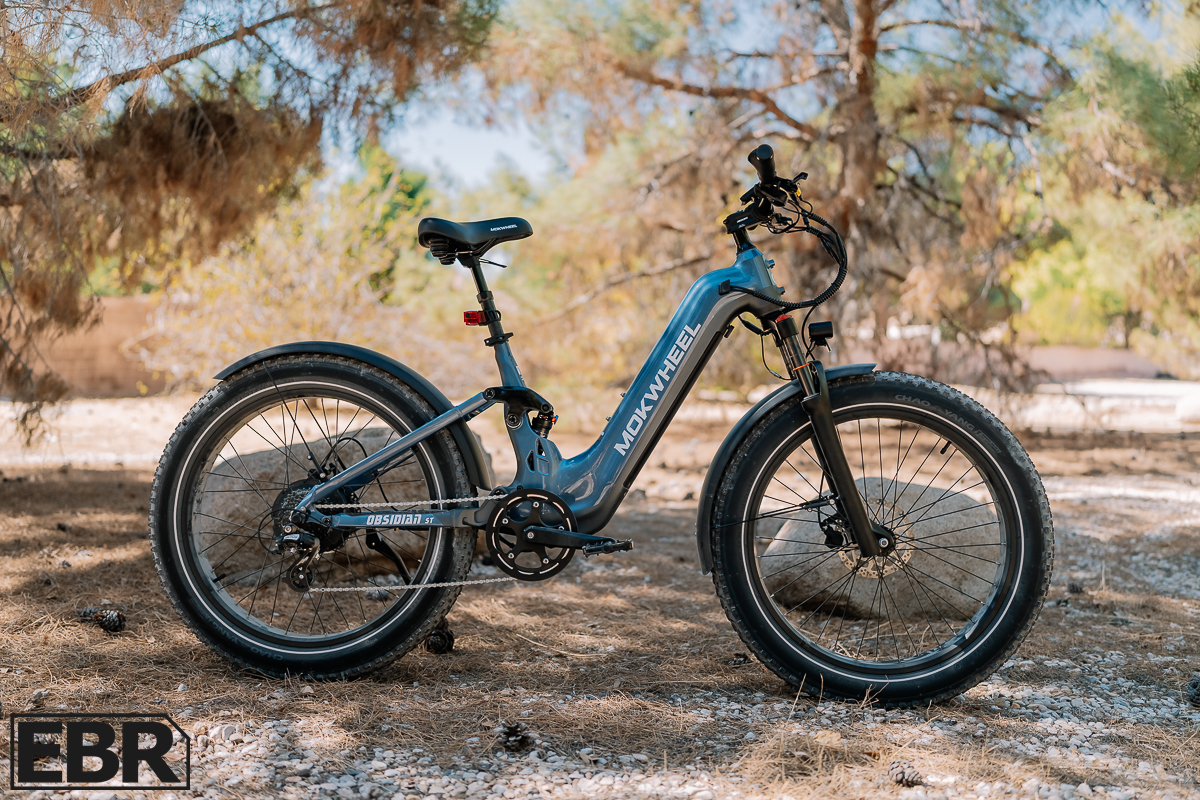
Reader Interactions